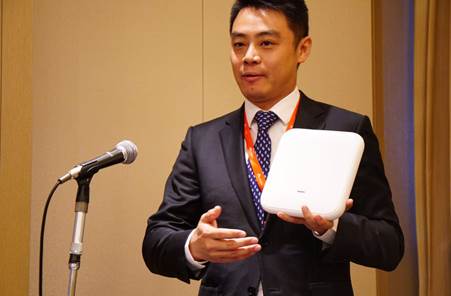Huawei has announced an upgraded version of its LampSite indoor mobile broadband solution, based on its CloudRAN architecture.
LampSite 3.0, announced at last week’s Mobile Broadband Forum in Tokyo, is targeted at enterprises of all sizes.
Huawei said the new version, with support for multi-carrier aggregation, distributed MIMO and 256QAM, will be able to break through radio bottlenecks and provides a “smooth evolution to 5G”.
It will also provide up to 240MHz “full bandwidth” capability, enabling multiple operators to share indoor infrastructure.
Multiple gigabit speeds, which more than double the throughput of previous versions, would enable support for nascent wireless applications, such 4K video and virtual reality, and an expanded service boundary will enable support for next-generation IoT applications for vehicles and households, said Huawei.
Zhou Yuefeng, Chief Marketing Officer of Huawei’s Wireless Network Product Line, said: “It enables digital technology for more industries to break the boundaries of the mobile communications industry, and to enable more industry partners to share indoor digital economic dividends.”
Huawei said the solution, available in the second half of 2017, would also simplify indoor network deployment, allowing operators and site owners to coordinate resources and automate service provisioning from a single point.
Venue owners will be able to deploy indoor networks by themselves.
Huawei said the present LampSite version, 2.0, has seen mobile traffic growth at Beijing airport increase by up to 67 times in the 24 months since its deployment.
Meanwhile, Huawei has also released a new version of its WTTx wireless home broadband solution.
The new version, WTTx 2.0, improves broadband capability, with the introduction of MIMO among other tweaks, to deliver five-fold jump in spectral efficiency, compared with previous iterations.
It also provides Gbps access rates. Huawei said the product will be developed through next generation LTE and 5G technologies to eventually support access rates higher than 10Gbps.
WTTx 2.0 improves convergence of mobile and fixed broadband services, allowing for resource sharing and converged billing, as well as tackling issues around costs and capacity associated with backhaul. A CPE management system also allows operators to centrally and remotely supervise CPEs.



